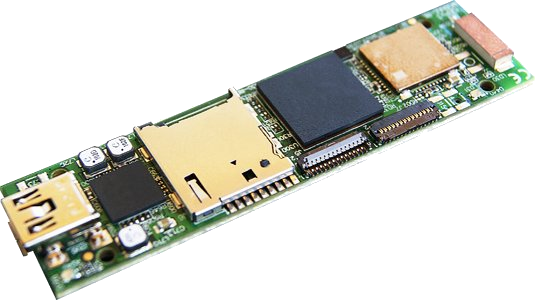Difference between revisions of "What can I do with IGEP COM MODULE"
From IGEP - ISEE Wiki
m (→What can I do) |
|||
| Line 13: | Line 13: | ||
= Overview = | = Overview = | ||
| − | This is the 2/3 chapter of IGEP COM MODULE Tutorial Guide. | + | This is the 2/3 chapter of the Getting Started with IGEP COM MODULE Tutorial Guide. |
| − | + | In this second chapter, we will learn some basics tasks. Upon completion, you will be ready to continue with chapter 3/3 that explains more advanced tasks. | |
= What can I do = | = What can I do = | ||
| + | |||
You must logged in the board. | You must logged in the board. | ||
| − | |||
| − | |||
| − | + | == Handle the GPIO-LEDS == | |
| + | |||
| + | The board has two user bicolor (green/red) leds available that can be controlled. In its simplest form, you can control of LEDs from | ||
| + | userspace. LEDs appear in /sys/class/leds/ and you can turn on and off with following commands: | ||
| + | |||
| + | $ echo 1 > /sys/class/leds/d210\:red/brightness | ||
| + | $ echo 0 > /sys/class/leds/d210\:red/brightness | ||
| + | |||
| + | $ echo 1 > /sys/class/leds/d440\:green/brightness | ||
| + | $ echo 1 > /sys/class/leds/d440\:red/brightness | ||
| + | |||
| + | A detailed guide on how use GPIO-LEDS can be found by following this link: [[How to handle the gpio-LED]] | ||
| + | |||
| + | == How to use wifi == | ||
| + | |||
| + | If you hve a wireless network adapter in your computer you can also connect to the board using the ad hoc network connection that the firmware configures byu default. | ||
| + | |||
| + | Use your wireless manager to connect toi the wireless network called in the form | ||
| + | |||
| + | IGEP_xx | ||
| + | |||
| + | After connecting, a DHCP IP address should be adquired. Now you can access, for example with ssh, to the target board connecting to the 192.168.7.1 address. | ||
| + | |||
| + | $ ssh root@192.168.6.1 | ||
| + | |||
| + | A detailed guide on how use wifi can be found by following this link: [[Using IGEP WLAN to communicate]] | ||
| + | |||
| + | == How to use bluetooth == | ||
| + | |||
| + | [[How to setup Marvell bluetooth]] | ||
| + | |||
| + | == How to use the SD card == | ||
| + | |||
| + | You can connect a micro SD card for storage. After plugin the SD card the kernel should detect the card and automount in /media directory. | ||
| + | |||
{{Table/IGEP Technology Devices | {{Table/IGEP Technology Devices | ||
|Tech_Family={{#lst:Template:Links|IGEP_COM_MODULE_Tech_Family}} | |Tech_Family={{#lst:Template:Links|IGEP_COM_MODULE_Tech_Family}} | ||
Revision as of 09:53, 6 September 2012
|
|
Contents
Overview
This is the 2/3 chapter of the Getting Started with IGEP COM MODULE Tutorial Guide.
In this second chapter, we will learn some basics tasks. Upon completion, you will be ready to continue with chapter 3/3 that explains more advanced tasks.
What can I do
You must logged in the board.
Handle the GPIO-LEDS
The board has two user bicolor (green/red) leds available that can be controlled. In its simplest form, you can control of LEDs from userspace. LEDs appear in /sys/class/leds/ and you can turn on and off with following commands:
$ echo 1 > /sys/class/leds/d210\:red/brightness $ echo 0 > /sys/class/leds/d210\:red/brightness
$ echo 1 > /sys/class/leds/d440\:green/brightness $ echo 1 > /sys/class/leds/d440\:red/brightness
A detailed guide on how use GPIO-LEDS can be found by following this link: How to handle the gpio-LED
How to use wifi
If you hve a wireless network adapter in your computer you can also connect to the board using the ad hoc network connection that the firmware configures byu default.
Use your wireless manager to connect toi the wireless network called in the form
IGEP_xx
After connecting, a DHCP IP address should be adquired. Now you can access, for example with ssh, to the target board connecting to the 192.168.7.1 address.
$ ssh root@192.168.6.1
A detailed guide on how use wifi can be found by following this link: Using IGEP WLAN to communicate
How to use bluetooth
How to setup Marvell bluetooth
How to use the SD card
You can connect a micro SD card for storage. After plugin the SD card the kernel should detect the card and automount in /media directory.
|
|



